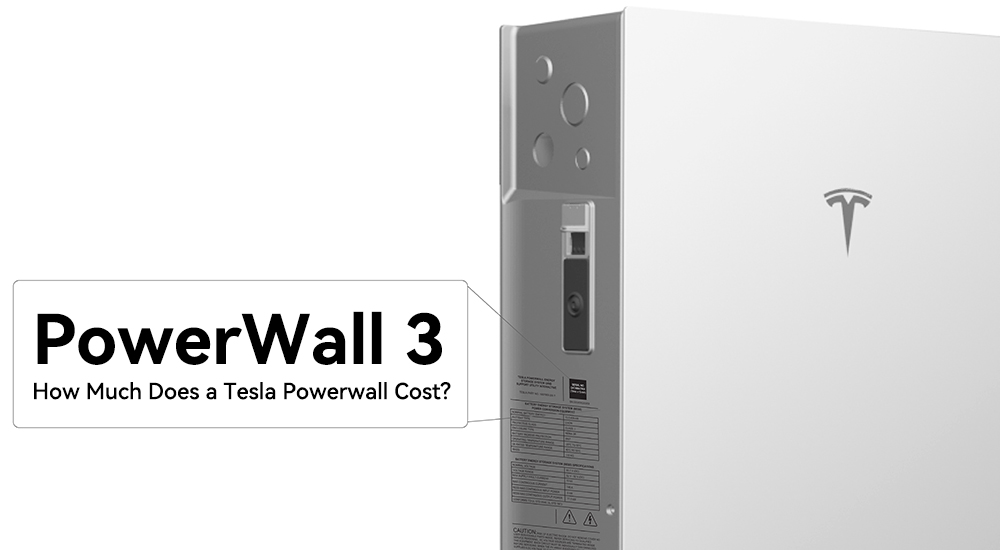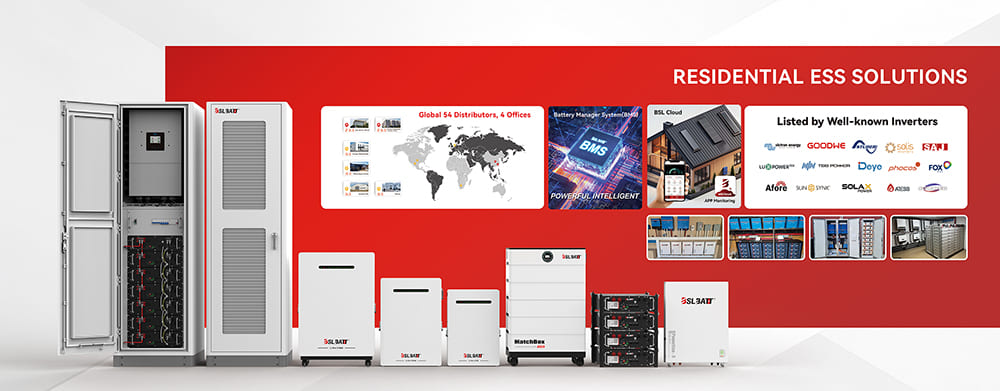As a company deeply involved in the energy storage industry, we at BSLBATT constantly observe the market and the questions consumers are asking. One question stands out frequently: “How much does a Tesla Powerwall cost?”
The Tesla Powerwall has become a household name in residential battery storage, synonymous with backup power and energy independence. Its sleek design and association with the innovative Tesla brand have made it a popular point of reference for anyone considering home energy storage. However, the answer to its cost isn’t a simple fixed price. It’s an investment influenced by several factors.
In this article, we’ll break down the typical costs associated with acquiring and installing a Tesla Powerwall in 2025, explore what drives these costs, discuss how incentives can help, and provide perspective by looking at alternatives, including the robust solutions we offer at BSLBATT.
The Core Components of Tesla Powerwall Cost
When you look at the price of a Tesla Powerwall, you’re essentially looking at two main components, plus some potential extras.
1. The Powerwall Equipment Cost:
| Model | Tesla Powerwall 3 | Tesla Powerwall 2 |
| Battery capacity | 13.5 kWh | 13.5kWh |
| Power output | 11.5 kW | 7 kW peak |
| Round trip efficiency | 89% | 90% |
| Chemistry | LFP | NMC |
| Maximum solar input | 20 kW | 5kW |
| Scalability | Max. 4 | Max. 10 |
| Dimensions | 1,105 mm x 609 mm x 193 mm | 1,150 mm x 753 mm x 147 mm |
| Weight | 130 kg | 114 kg |
| Price | $15,400 | $9,000 ~ $10,000 |
It’s important to understand that this price is for the hardware only. It doesn’t include the necessary supporting equipment or the labor required to get it up and running in your home.
2. The Installation Cost: Often the Largest Variable
Getting the Powerwall installed is where the cost can fluctuate significantly. Professional installation is mandatory for safety, warranty, and system performance. The average installation cost can range anywhere from $3,000 to $6,000+ USD, bringing the total estimated price for one installed Powerwall unit to between $12,000 and $16,000 USD or more, before incentives.
What influences this range? Several factors come into play:
Complexity of Your Existing Electrical System: Older homes may require significant electrical upgrades to safely integrate a battery storage system.
Location of Installation: Whether the unit is installed indoors or outdoors, on a simple wall or a more challenging surface, impacts labor time and material needs.
Distance from Main Electrical Panel: Longer cable runs increase material and labor costs.
Permitting and Inspection: Local regulations require permits and inspections, adding fees and potential delays.
Installer’s Pricing Structure: Different certified installers will have varying labor rates and overheads.
Other Potential Costs:
Backup Gateway: Tesla systems require a backup gateway to manage the connection between your home, the grid, solar (if applicable), and the Powerwall. This essential component adds to the equipment cost.
Main Panel Upgrades: If your home’s electrical panel isn’t sufficient, you might need to upgrade it, which is an additional cost.
Accessories: Depending on the specific setup, minor additional components might be needed.
Key Factors Influencing Your Total Powerwall Investment
Understanding the basic components helps, but these factors truly shape your final bill:
- How Many Powerwalls Do You Need? Tesla systems are stackable. If your energy needs or desired backup duration exceed the capacity of a single Powerwall, you’ll need multiple units. Each additional unit adds roughly the equipment cost plus a portion of the installation cost (though the per-unit installation cost might decrease slightly for multiples on the same property).
- Your Geographic Location: Costs vary significantly by state, country, and even region within a state due to differences in labor rates, regulations, and market competition.
- Ease of Installation: A straightforward installation on a suitable wall near your main panel will be on the lower end of the cost range, while complex setups increase costs.
- Your Chosen Installer: Obtaining quotes from several Tesla-certified installers is crucial to finding a competitive price and ensuring you work with a qualified professional.
Lowering the Investment: Incentives and Savings
Fortunately, the gross cost is often not what you end up paying out-of-pocket. Significant incentives exist that can substantially reduce the net cost of a Tesla Powerwall (or any qualified home energy storage system).
- The U.S. Federal Solar Investment Tax Credit (ITC): This is the most impactful incentive for many U.S. homeowners. As of 2024, it provides a tax credit equal to 30% of the total cost of your solar energy system, including qualified battery storage, with no upper limit. Crucially, battery storage installed on its own (without solar) also qualifies for the 30% ITC if installed after 2022.
- State and Local Rebates: Many states (like California with its SGIP program), cities, and even utility companies offer additional rebates or incentives specifically for battery storage. These can often be combined with the federal ITC, further reducing the net cost.
- Utility Virtual Power Plant (VPP) Programs: Participating in utility-managed VPP programs, where your battery can help support the grid, can sometimes provide financial compensation or upfront incentives.
These incentives can potentially reduce the net cost of a Powerwall by 30% to 50% or even more, depending on your location and eligibility.
Is Investing in a Powerwall (or Any Home Battery) Worth It?
Understanding the cost is one piece; assessing the value is another. The “worth” of a home battery like the Powerwall depends heavily on your specific circumstances and priorities:
- Backup Power: If you live in an area with frequent or prolonged power outages, the value of reliable backup power can be significant, providing security and avoiding losses (like spoiled food or lost productivity).
- Electricity Bill Savings: If your utility has time-of-use (TOU) rates, a battery can save you money by storing cheaper off-peak electricity to use during expensive peak hours. It also increases your self-consumption of free solar energy. The amount saved varies greatly by location and utility rate structure.
- Energy Independence: For those seeking greater self-sufficiency and less reliance on the grid, the value is in the empowerment of generating, storing, and using your own clean energy.
- Environmental Contribution: Using stored solar energy reduces your reliance on potentially fossil-fuel-generated grid power, contributing to a lower carbon footprint.
For many, the combination of potential savings, backup security, and environmental benefits justifies the investment. However, it’s crucial to do the math based on your energy usage, your utility rates, and your available incentives.
How to Get a Quote and Explore Your Options
If you’re seriously considering a Tesla Powerwall, the best approach to get an accurate cost estimate is to contact Tesla directly through their website or reach out to a few Tesla-certified installers in your area for quotes.
If you’re exploring alternatives or want to compare different technologies and price points, we encourage you to look into other reputable battery manufacturers.
Considering a reliable, high-performance LiFePO4 solution?
At BSLBATT, we offer a range of home and commercial energy storage batteries with different capacities to fit various needs. We provide the technical specifications and support to help you or your installer design the optimal system.
We invite you to:
Browse our BSLBATT Energy Storage Systems to learn about our technology and product range.
Contact us directly with details about your project – we can help you understand how our solutions stack up and provide a tailored proposal.
Frequently Asked Questions (FAQ) About Battery Costs & Capacity
Q1: Does the Powerwall price include solar panels?
A: No, the cost mentioned for the Powerwall is generally separate from the cost of a solar panel system, though they are often installed together. Tesla does offer integrated solar roof and solar panel solutions that are designed to work seamlessly with Powerwall, and they may provide combined quotes.
Q2: How long does a Tesla Powerwall typically last?
A: Tesla offers a 10-year warranty for the Powerwall, guaranteeing it will retain at least 70% of its capacity over that period or after a certain number of cycles (whichever comes first). LiFePO4 batteries, like those from BSLBATT, are known for their long cycle lives, often rated for 6,000+ cycles or more depending on the DoD, suggesting a potential lifespan well beyond 10 years under typical residential use.
Q3: How does Ah relate to kWh for battery capacity?
A: Amp-hours (Ah) measure the amount of charge, while kilowatt-hours (kWh) measure the total energy. The relationship is kWh = (Ah * Voltage) / 1000. For example, a 100Ah battery at 48V has a theoretical energy capacity of (100 * 48) / 1000 = 4.8 kWh. Different voltages mean the same Ah can represent different amounts of energy. To understand this in more detail, please read our guide: “Understanding Amp Hours“.
Q4: Are BSLBATT batteries a cheaper alternative to Powerwall?
A: BSLBATT aims to offer highly competitive cost-per-kWh and cost-per-cycle value, often resulting in a lower total system cost compared to some premium brands like Powerwall, while delivering comparable or superior performance and lifespan characteristics, particularly with our focus on high-quality LiFePO4 technology. We encourage you to compare specifications and get quotes.
Q5: Can I finance the cost of a home battery storage system?
A: Yes, many solar and energy storage installers and financial institutions offer financing options, including loans or leases, to help spread the cost of the investment over time.
Post time: Jun-09-2025










